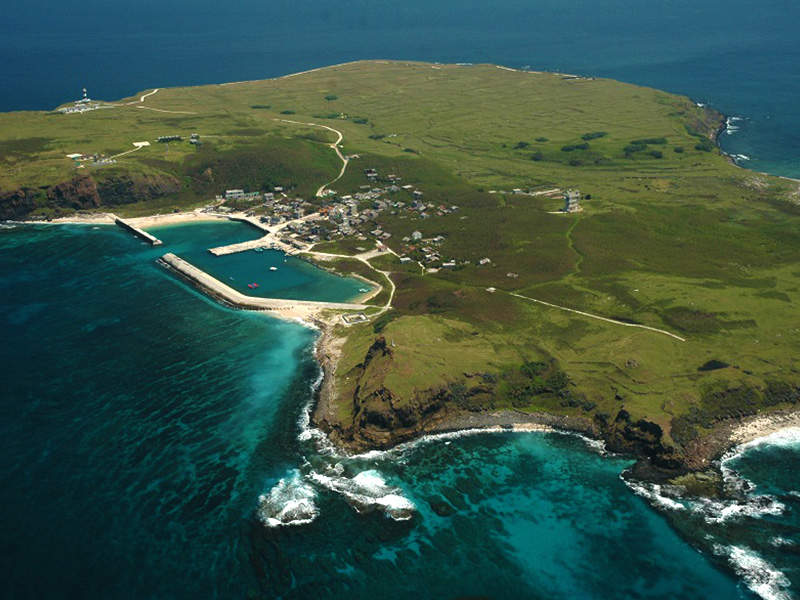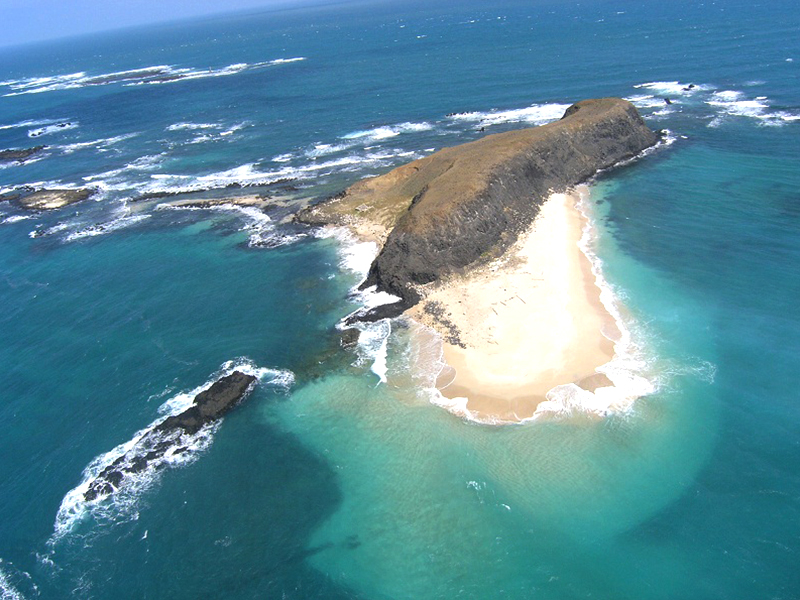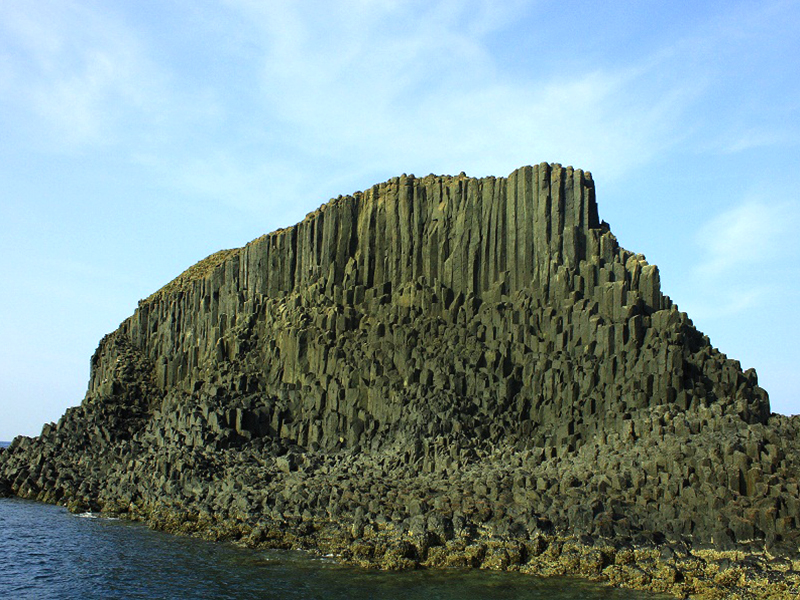Basalt Reservation Area
Penghu Islands is composed by almost a hundred of large and small islands and islets, apart from Huayu, they are all composed of several layers of basalt coulee and partly sedimentary rock mezzanine; even though the islands are only 127km2 in area, it houses such unique natural basalt landscape that the Taiwan mainland cannot compete against! According to geologists, the basalt in Penghu is formed by countless inconsecutive volcano activities, during which the lava rose up from beneath the shallow sea or from fissures underground and cooled once reached surface. So far, the oldest basalt known is the Wangan basalt, its lava effused 17 million years ago, and since then, there had been volcano activities every one or two million years up until 8.2 million years ago, when the basalt on Dongyuping were formed, and volcano activities ceased.
The Penghu basalt coulee tends to form a perpendicular column once cooled, and after years of weathering and erosion, such basalt columns form a spectacular geological view with columnar joints placed side by side, some erecting into the sky, some crooked or bent, presenting various forms. Professor Wang Shin of Department of Geography, National Taiwan University once said, "Compared to the World-class North Ireland Basalt landform, the landscape in Penghu Basalt Reservation Area is just as spectacular, if not better! "
Basalt lava from the oceanic crust is a type of volcanic rock, and such lava will cool rapidly when reaching the surface, thus contracting and chap into pentangle or hexagon columns, this is called "jointing ". The structure of a joint is multi-variant, and thus the most unique natural landscape of Penghu Basalt.
Basalt with a dense texture is often grayish-black in color, and according to the different mineral elements inside the rock, there can be different shade variances. If the air inside the lava did not escape in time when the lava cooled, it will become air holes, thus forming the
Dinggouyu

Dinggouyu is situated 1km southeast of Jishanyu, formed by four basalt rock reefs; the entire island is composed of denser basalt, and the rocks often contain peridotite clusters; the lava flowing to the surface cooled off into different directions of columnar joints due to its different space and location, creating various peculiar shapes. This island has a rippling terrain, after weathering and abrasions,the abrasion columns developed in groups, creating a fissure in between which seemed like "a line connecting the sky and ocean"; the multi-variant abrasion terrain here is just spectacular. This island is located in a remote place where the current is rapid, tourists are rare, cliffs are steep and climbing is very difficult; therefore, every April to September, various terns and migratory birds come here to dwell and breed, the vast amount of birds forming yet another spectacular sight.
Siaobaishayu

Siaobaishayu is situated in the waters 1km off the north of the main island, and won its name due to the large patch of white sand beach (baisha means white sand) southwest of the this island. If you look from the southeast ocean, the island is shaped like a cat, therefore, local residents also call it "Maoyu" (Mao means cat). The lava plateau south of this island is about 15 – 20m high, extending 250m from the east to the south; its basalt columnar joints are well-developed, some crooked and bent, forming a magnificent sight. On the east side of the lava plateau is a basaltic dike which is 50m long, and a semi-circular crater-like terrain, with a bulging beach rock on the beach, part of the joints bearing chessboard-like chaps, very interesting to watch along with the pot holes scattered in between. The columnar basalt landscape is very unique on this island, and has been listed the Basalt Reservation Area.
Jishanyu

Jishanyu is situated 4km off the northeast of Beiliao Village in Hushi Township, this island was originally a lava plateau, but was split into two, one large one small, due to intense abrasion (but can be connected when the tide ebbs). Both islands are basaltic mesa plateaus, 20m high and surrounded by sea cliffs. The large Jishanyu is surrounded by an abrasion ditch and several sea caves; the small Jishanyu is surrounded by perpendicular basalt columns with clear rock joints, tall and short columns are tightly linked together, looking like a "pipe organ". It is an extremely magnificent sight. Every summer, various Family Laridae migratory birds come to this island to dwell and breed, adding another interesting sight to the spectacular basalt landscape.
